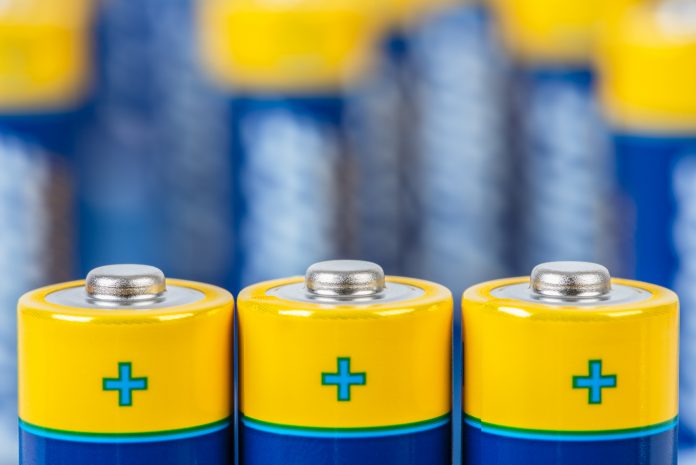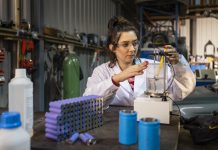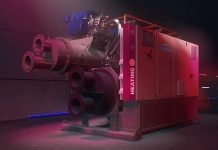The increasing focus on alternative batteries arises from concentrated lithium extraction in certain regions, raising concerns about future supplies and global reliance on Li-ion batteries
Used to power electric vehicles (EV), demand for Li-ion batteries is set to increase as more consumers switch to cleaner, greener motoring.
However, with limited sources of lithium and other crucial elements available, supply chain disruption could soon be on the way, leaving many manufacturers searching for an alternative.
Alternative battery technologies will be crucial
Developing alternative battery technologies will be crucial to decarbonising the UK’s economy by 2050.
The Faraday Institution estimates that an average battery EV sold in the UK in 2025 will generate around a quarter of the emissions of a petrol or diesel-powered counterpart across its lifecycle, from mineral extraction through to battery recycling, dramatically reducing the emissions created in meeting our transport needs.
As a result, demand for batteries produced in the UK is also expected to grow, with the Faraday Institution predicting that the UK will require almost 200GWh of supply by 2040, with a global total of 6.5TWh required by 2050.
The global push for EV’s and future
However, unless the supply of raw materials can be assured, the global push for EVs may falter just as demand increases. With the core elements that make up the battery supply chain – cobalt, lithium, graphite and nickel – being primarily sourced in countries such as the Democratic Republic of Congo and on continents such as Asia,
In South America and Australia, there is a real risk of supply breaks for manufacturers in the UK and Europe.
While some of these earth elements can be found in Europe, particularly in areas including Sweden, Finland, Slovakia, the Pyrenees, Ireland, and Spain, it is currently much cheaper for manufacturers to import these materials from further afield.
Further, the dual impact of supply chain uncertainty and increasing demand has led to soaring raw material prices.
To address problems associated with the security of supply and raw materials shortages in existing lithium-based technologies, local sources of the key elements must be exploited in tandem with a greater focus on recycling wherever possible.
Problems associated with the security of the supply of ASSBs
All-Solid-State lithium Batteries (ASSBs) represent a strong option for the future of lithium-ion. ASSBs are modified versions of existing Li-ion batteries, and some established EV manufacturers, including Toyota and Nissan, are leading the race in this field of innovation.
In June, Toyota unveiled plans to reduce the size, cost and weight of batteries for its EVs – both ASSBs and liquid batteries. Nissan has also announced that by 2028, it intends to launch an EV with ASSBs developed in-house.
But Lithium technologies may not be the only solution. As alternative battery chemistries become more viable, the question becomes which is the most likely to win the race to market? most promising alternatives, based on rapid rises in global patent filing activity, include sodium-ion, aluminium-ion and graphene technologies.
Sodium-ion batteries are a front-runner, with applications filed by battery manufacturer Faradion, covering a wide range of territories such as Korea, Japan, the US and the UK, all of which are key areas of interest for alternative battery production.
Global market for sodium-ion batteries will reach £4 billion
The global market for sodium-ion batteries is predicted to reach $4 billion by 2031. Some benefits of sodium-ion technology are that it doesn’t rely on nickel, cobalt or manganese, has increased thermal stability compared to Li-ion batteries and is particularly suited to static storage – making it ideal for low-cost EVs, including e-bikes.
However, whilst patent filings for sodium-ion batteries are increasing yearly, making up 25-30% of alternative chemistry filings per annum, these numbers are still in the hundreds per year.
Whilst graphene is currently an expensive alternative, it could bring several advantages over Li-ion batteries, including faster recharging times, increased resistance to wear and a longer lifespan.
This fast-developing technology is becoming more viable, with Chinese carmaker GAC, going to market with a graphene battery-powered electric SUV in 2021. Additionally, the Chinese graphene manufacturer received further investment in early 2023 from Evonik.
Meanwhile, US battery manufacturer Nanotech Energy recently announced plans to invest in a UK Gigafactory to produce non-combustible graphene-based Li-ion batteries.
Aluminium-ion batteries could also offer some significant benefits, such as high energy density and rapid charging, but they are primarily suitable for static storage due to high operating temperatures.
In the race to find an alternative battery chemistry that is efficient and powerful enough to meet the requirements of the EV market, global patent filings are rising rapidly year on year.
The problem with alternative chemistries
However, filings for alternative chemistries are still significantly lower than those for Li-ion battery technology, numbering between 600-800 per annum. Applications per annum for Li-ion technology are in the thousands.
Whilst Asian companies currently make the most filings for alternative chemistries, this could soon change, with US-based companies such as Natron developing a significant presence in the space.
Examples of recent patent filings by key players in this area include Faradion Ltd’s PCT application, WO 2021/161044 A1, directed to a sodium-ion battery pack in which output voltage is controlled to align with the external components connected to the pack, allowing for more of the energy available in the sodium cells to be used.
In the aluminium batteries space, Albufere Energy Storage S L have filed an application (WO2023/047004 A1) for a high-voltage battery which includes sandwich-type stacking of the cells and graphite current collectors to reduce the cell’s internal resistance.
Despite significant progress being made in the race to find an alternative battery chemistry, none are yet able to replace the need for Li-ion batteries entirely.
As the battery market grows, there needs to be a strategy
As the market grows ever more competitive, innovators will need to ensure that they have a robust strategy to protect their intellectual property – potentially across multiple territories at once. Seeking professional advice sooner rather than later will allow innovators to keep searching for alternatives, safe in the knowledge that their commercial interests are fully protected.
This piece was written and provided by Dr Joanna Thurston, Partner and Patent Attorney at European intellectual property firm, Withers & Rogers. Dr Thurston heads up the firm’s batteries tech group.












